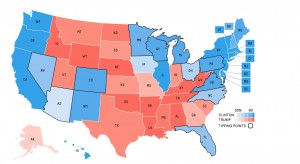
It is pretty clear that technology has played an important part in elections in this country, ranging from the first JFK-Nixon debate and how a televised debate led the viewers to a different conclusion than those who listened to it on radio. Dial forward and we all witnessed the power of the social media and data analytics starting from the 2008 election.
In this election technology has been a huge influencer on how things are beginning to unravel. The Trump videos from 2005 (Warning: Graphic Language!) show the dangers of digital media. Once recorded, digital content generally has a long shelf life. Especially if the content is about celebrities or of historic significance etc. Increasingly, thanks to free or cheap storage from cloud service providers such as Google, Microsoft and Dropbox, even we all tend to save everything at our disposal. Many do not understand the long term implication of all of this – their safety, who has access to them, how deleting them in one place doesn’t really delete them everywhere etc.
Then you have WikiLeaks releasing alleged emails from Hillary Clinton’s campaign as well as her speeches to wall street companies. Whereas leaking documents and letters applies equally to paper as it does to born digital content in that someone with access can leak it to other parties easily or they can be both be stolen. However, we can all agree that it is easier to “steal” them in the electronic realm because one doesn’t have to be physically present to commit such an act. (more…)